Production designer
Marieke van den Bosch based in the Netherlands

Three generations
Research
Research

Diversity and Inclusion: Seeing different perspectives, equality. Blind spots and (unconscious) biases. Intention vs impact. Stereotyping vs Empowering. Cultural Appropriaton.
Filmforward de vrijplaats residency
ResearchHow can we communicate our initial ideas as a production designer more clearly to the other department heads during the development phase of a film?
At Filmforward I get the opportunity to develop a roadmap for the preproduction and get to understand better the needs, the grey-zones, the joy of making with a team.
Janine’s Room
production design
Part of exhibition Monomania at Rijksmuseum Amsterdam 4 July 2025 - 14 Sep 2025. Artist Fiona Tan. We created this set with (art department): Fien Lute, Athina Liakopoulou, Phoebe Mine de Geus, Marnix Bloemberg, Aengus Havinga.
A strange tribute to motherly love
production design
A contemporary fairy tale for adults about the make-ability of life and a personal journey to happiness, all set in a world where people explode from stress.
Village piano tuner Samuel Dirk (48) is cleaning up his house after his wife recently exploded from stress. His magical jam-making mother wants to help, and ropes in Samuel’s oldest friend Edwin, hoping to make Samuel’s life ‘complete again’. They pursuade Samuel to go on a bonking German joy-ride, forcing him to consider the question: what is the make-ability of a happy life? Samuel returns home with new prospects and for one last taste of his mother’s magical jam mixture.
The young man as a movie star
production design
The Young Man as a Movie Star: Paranoia, Opulence, Perversion, Competition. Is based on the young male character and his role in cinema. Using the well-known male directors Hitchcock, Godard, Spielberg and Von Trier – each iconic for a different period in film history - a period in time when the concept of masculinity definitively shifted – different possible relationships between a 20-year-old man and 45-year-old woman are explored in this work.
The same two actors play a variation of the fictive characters Bully and Candy in each film. Both depict distorted liminal figures in cinema and act within the frameworks of perverted film clichés. They are constantly entangled in a different melodramatic plot, which reflects on the zeitgeist of the aforementioned film makers and incorporates their stylistic characteristics (the 1950s, 1960s, 1980s and 2000s). In Opulence, for example, Bully and Candy are a neurotic housewife in the fifties and a fugitive terrorist; in Paranoia two playful lovers; in Perversion a mother and her psychic son; and in Competition fellow performing artists who struggle with physical and moral problems.
Mothers
production design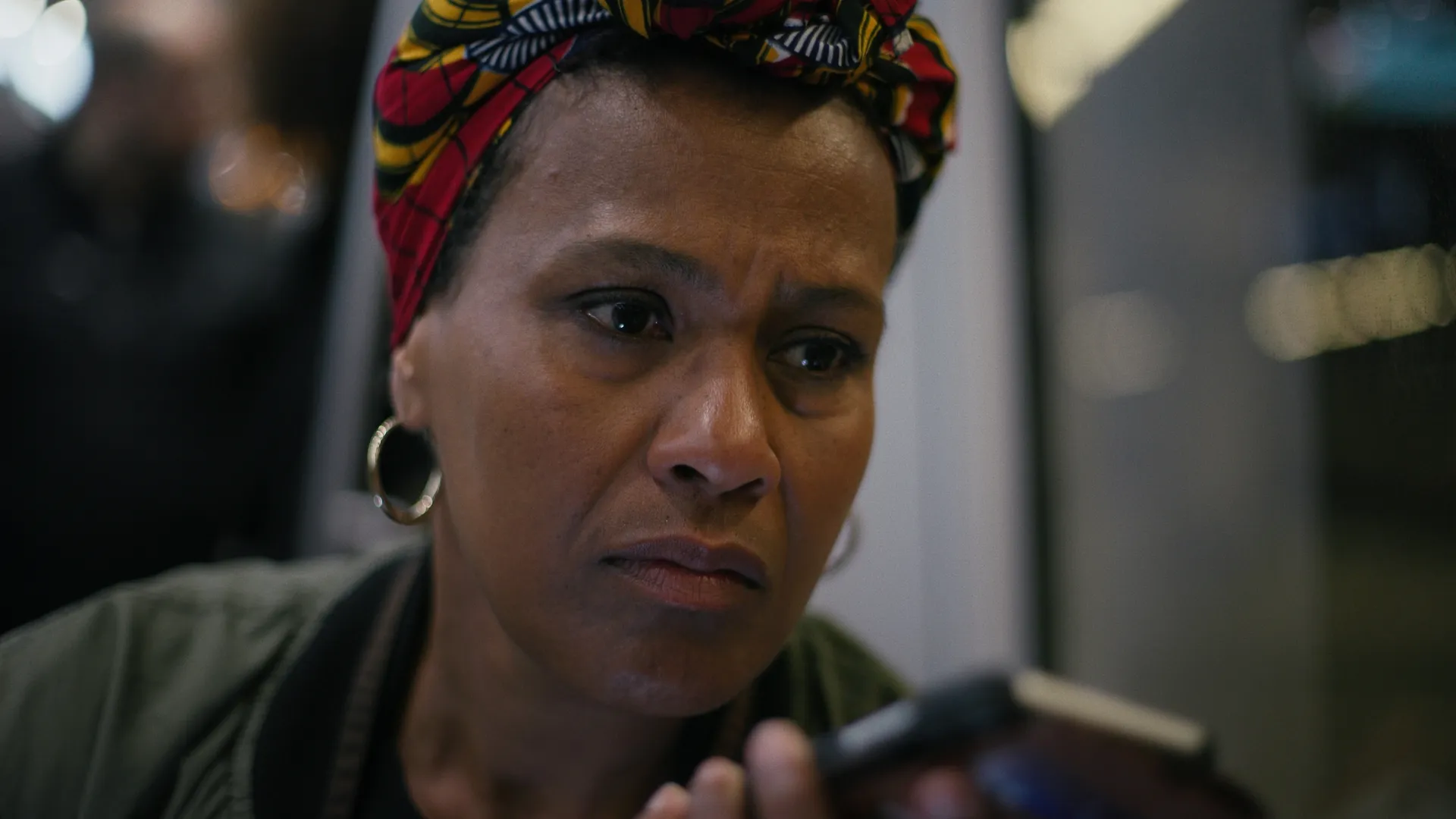
Four mothers explain how their sons ended up in trouble with the law because they fell in with the wrong crowd, experienced trauma or were intimidated by a gang. The offenses are minor, and their involvement was not always proven—sometimes they were only witnesses to a crime. But once Amsterdam’s Top400 crime prevention program has them in its sights, things just get worse for them.
The mothers are held hostage by a bureaucracy that entirely disrupts family life. Friends and family see them as bad parents, and the police sometimes even treat them as accomplices. To protect their identity, the mothers themselves don’t appear on camera, but we do hear their voices. Their roles are played by actresses who lip-sync their stories.
These stories are not only an expression of frustration, anger and a sense of powerlessness, but also an indictment of the use of algorithms for the prediction of criminal behaviour. This form of crime prevention has a particularly stigmatizing effect and discriminates against socially and economically underprivileged young people from migrant backgrounds.
Nominated for IDFA Award for Best Dutch Film
The mess we make
production design underwater world
After twenty years of minimal contact with his borderline mother, filmmaker Allard Detiger is called by the police. His mother’s neighbours have been complaining. Her house is totally neglected, and professional help is needed immediately.
From that moment onwards, Allard feels responsible to make sure that his mother receives professional care, but he gets increasingly entangled in the trauma of his own childhood. As his mother's condition deteriorates, the walls that he had built between them fade.
Allard is forced to take a critical look at himself, and face his own trauma, to prevent him from passing it on to his young daughter. Filmed over a period of more than 10 years, ‘The Mess We Make’ is an intimate documentary about a child's struggle to be independent from a parent who won't let go.
Nominated for NFF Award for Best Documentary Film
SPUTUM
production design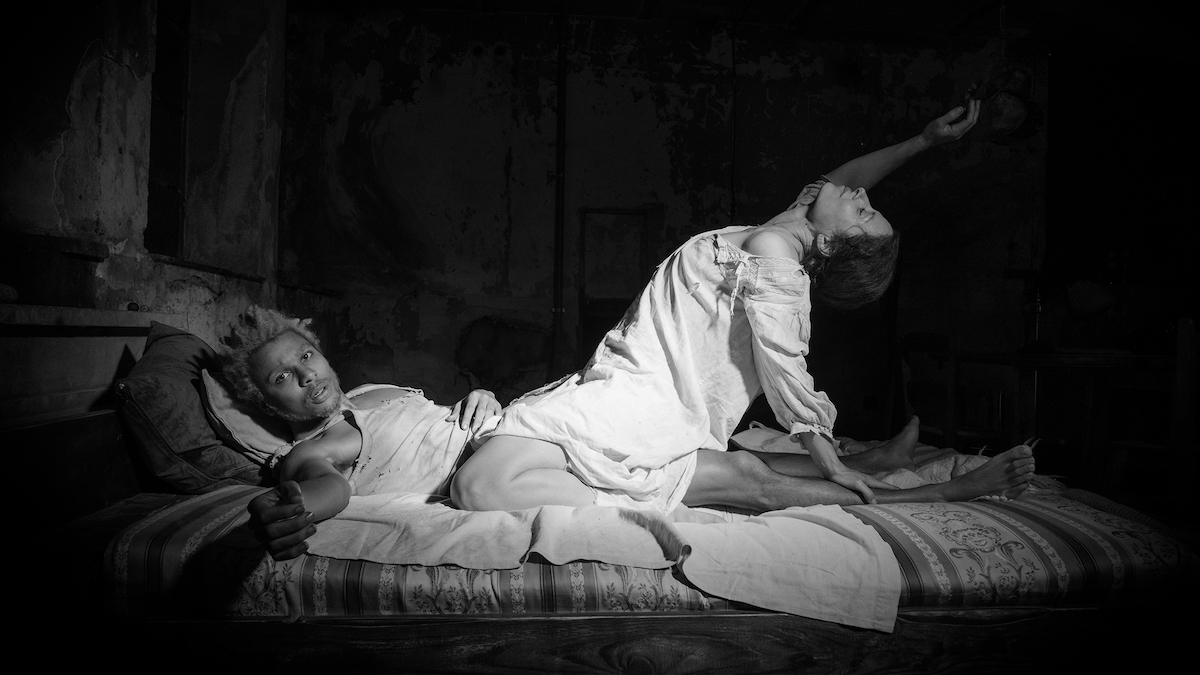
In the saliva-saturated Sputum world, an ugly class struggle is unfolding. The ruling Antique FAMLY depend on the saliva of the Bakelites to survive an invisible, buzzing, fungus cloud. With invasive, saliva milking machines and an addictive rot powder, their FAMLY enforces a status quo. But when the Bakelite rebellion led by Jimin Blyth gets help from aristocratic Antique deserter Kalta Crux, their future takes a new turn.
Between your ears
production design
Classical masterpieces played by the Concertgebouw Orchestra evoke fantasies in children. These come to life in every episode. 12 episodes for Dutch Children School TV.
Circular Ruins
creating the hand-knotted ropes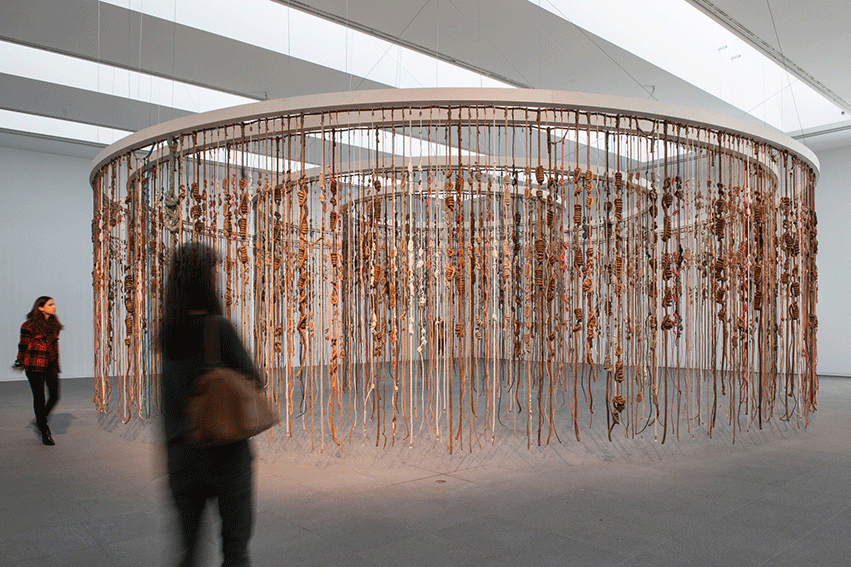
At first glance, the installation Circular Ruins evokes a hanging system for garments in the changing room of a coal mine. Such a room would once have existed at Le Grand Hornu, this work’s commissioner, a contemporary art museum in a post-industrial space. The work consists of an arrangement of concentric circles, 12 metres in diameter, with lengths of hand-knotted ropes hanging almost to the floor, like curtains. The viewer can walk amongst the hanging ropes absorbing their inherent smell and tactile appeal and the variation in the patterns of the knots and the types of rope and cord used. The scale and shape of the sculptural installation are at once imposing and intriguing and the pattern of knots suggest a code to be cracked. A male voice can be heard reading from Borges’ enigmatic short story, 'The Circular Ruins' (1940). The knots in the ropes represent Fiona Tan’s translation of Borges’s words into numbers. Her use of knots is inspired by khipu, a system of intricate knotted cords used as recording device, mnemonic or partial language system by the Incas. Khipu has been interpreted as a proto-computer programming system and it uses a base-10 numerical system like Paul Otlet’s Universal Decimal Classification (UDC). Tan’s wider research into Otlet and his use of circular diagrams are another source of inspiration for this work. The eponymous ruins in Borges’s story are a circular enclosure in the jungle destroyed by fire and once used to worship gods. For Tan, Borges’ circular narrative can be seen as a playful questioning of all artistic endeavour.
Is this the poem i promised you?
set design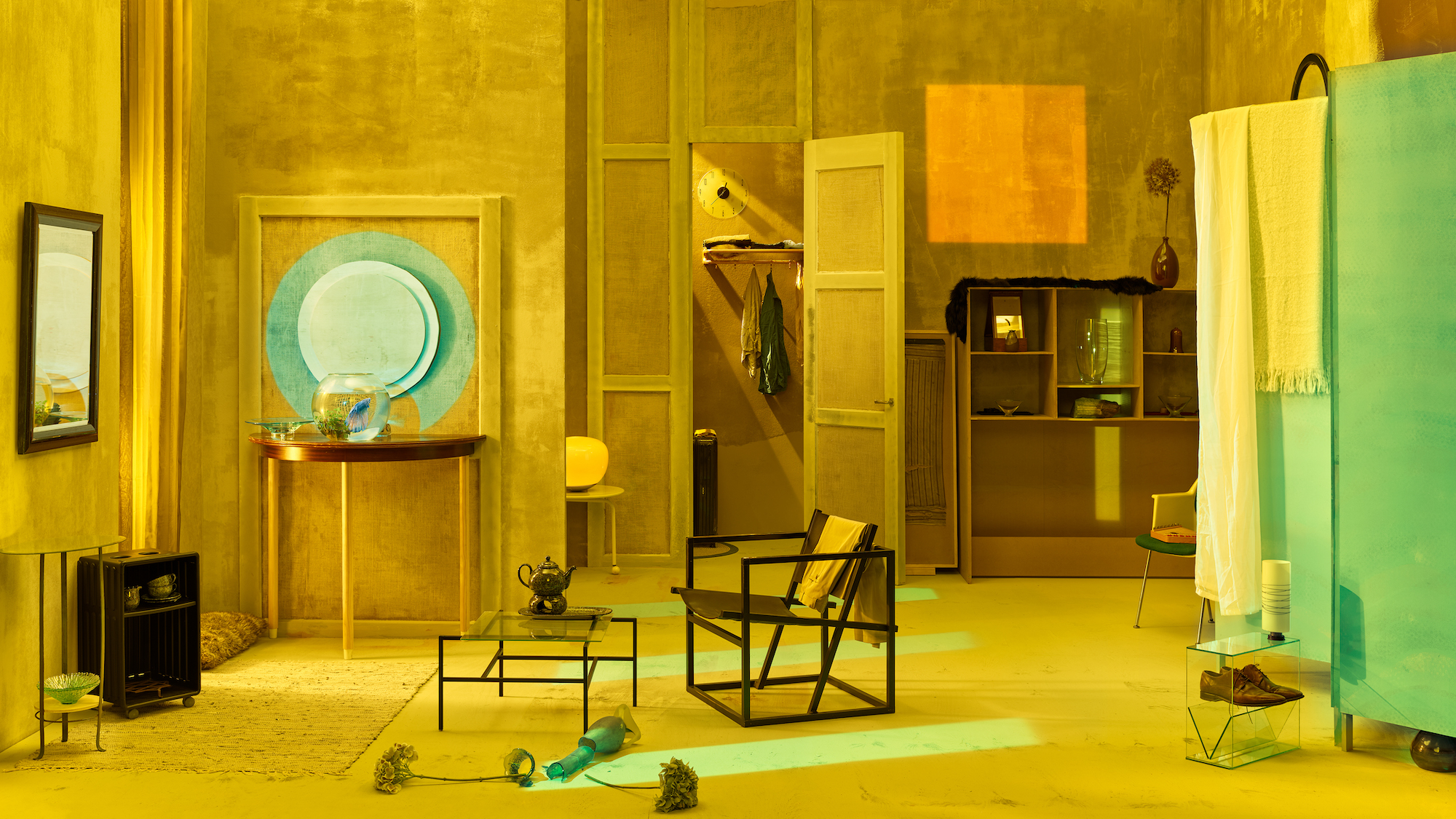
Photo series 'Is This The Poem I Promised You?' by Dutch photographer Richard Westerhuis. The people in the story have disappeared, but what they have left behind stimulates our imagination. In each photo of such a recreated room, the light is slightly different and new props can be seen. They raise many questions: Who were the inhabitants of this house? Why did they leave in a hurry? Did something bad happen there? Or is there another, much simpler explanation for why the rooms look so messy and empty?
War Save Me
production design
A war rages inside the head of P., a homeless drifter who only finds peace in his fantasy. Portraits of homeless people are plentiful. But what does their inner world look like? This feature film grants us a raw, cinematic glimpse into P.’s twisted thoughts. His restless wanderings through the city and the hustle and bustle of the night shelter make him long for the clarity and purpose of war. Because in real life, boredom and tension always go hand in hand. No clichés or imperative storyline, but a gritty slice of lifeexposing inconvenient and invisible aspects of our society.
Nominated for NFF Award for Best Short Film
In Summer
production design
A subtle family drama which focuses on the relationship between two Turkish sisters. It’s the untold story of the first generation of Turkish guest-workers that moved back to Turkey and the second generation that stayed behind. This will be told through the eyes of Meral (who lives more to the Turkish traditions) and Elif, who is her Dutch counterpart. Their difference in lifestyle is one of the reasons they cannot get along well, the only binding element in their relationship is their father Mehmet. But he’s about to move back to Turkey. The sisters help him to pack his things, while fighting over their cultural differences. When they’re done, Mehmet ensures them that they can come and visit him this summer. They do, but this time to pack the things of the passed away Mehmet while the tension on their mutual relationship begins to rise…
Winner BUMA award
Think of something blue
production design
Think of something blue is based on a Dutch Poem by Martijn den Ouden. It portrays a man, dealing with loneliness and mourning, comforted by memories of his loved one.
Think of something blue,
Of a swimming pool with women relaxing on the side
In blue bathing suits drinking blue coctails through blue straws
And reading books with a blue cover
And sometimes they look up at the sky
To satisfy themselves if the firmament still is bright and tight
If there isn’t a cloud floathing around
And no, the air is crisp, heavenly blue
The women place their books on their legs, with the blue cover up
View their blue painted nails
Take a sip with the blue straw of their blue coctails
Raise their books from their legs and resume reading
While the sisters are swimming, silently swimming
Light and smooth through the fresh water
You hear them breathe
Or the water whirling
Sliding wrinkels over wrinkels
And other then the colour of their bodies everything is blue
Think of something blue,
The sports car of sugar daddy Sander
Loaded, quick, colour-blind
Assuming he’s driving a green Triumph Spitfire
Leave him in delusion
And think of the shiny blue lacquer
And royal blue leather gloves of his wife
Smoke, drink vermouth bianco
And look out from the flat beaten tower on the rocks, over the summer blue sea
And stand up
Let lukewarm water flow over the wrists
Breathe quietly
Place a cold teaspoon on the tongue
Think of something blue
Balloons
Big dreamy eyes
Weddings
Castles made of air
Aziza
production design
Aziza feels lost as she does not seem to find a person to confide in, when struggling with a personal issue. Her protective brother suspects that she is hiding something. But is her brother really as unforgiving as he's pretending to be?
Geografie der Zeit
Set dressser
Fiona Tan has transformed the ground floor of the MMK 1 into a parcours in which video projections, audio and sculptural works join in a concentrated reflection on the individual in an increasingly disjointed globalized world.
The artist contrasts her filmic portraits of these melancholic sites with a domestic environment that seems to be expecting the return of its mysterious inhabitant at any moment.
History’s Future
production designer assistant
Part fiction, part documentary, part essay on the contemporary world, HISTORY'S FUTURE is one man's odyssey through a Europe in turmoil - and through his own mind.
Options and Futures
production designer assistant
In the back room Fiona Tan creates a dramatic architectural metamorphosis; It's a new twist in her oeuvre. New video installations and spatial images included in this carefully orchestrated and enigmatic environment. For her biggest, complex installation she traveled among other things to Detroit (USA), Fukushima (Japan), Cork (Ireland) and Angers (France) to capture social decay and economic devastation. She presents us a sample of her own complex feelings and the communities she encounters in a time of turmoil and tumult. The "system" (the government and large institutions) will no longer be trusted.
Berlinale Talent 2023
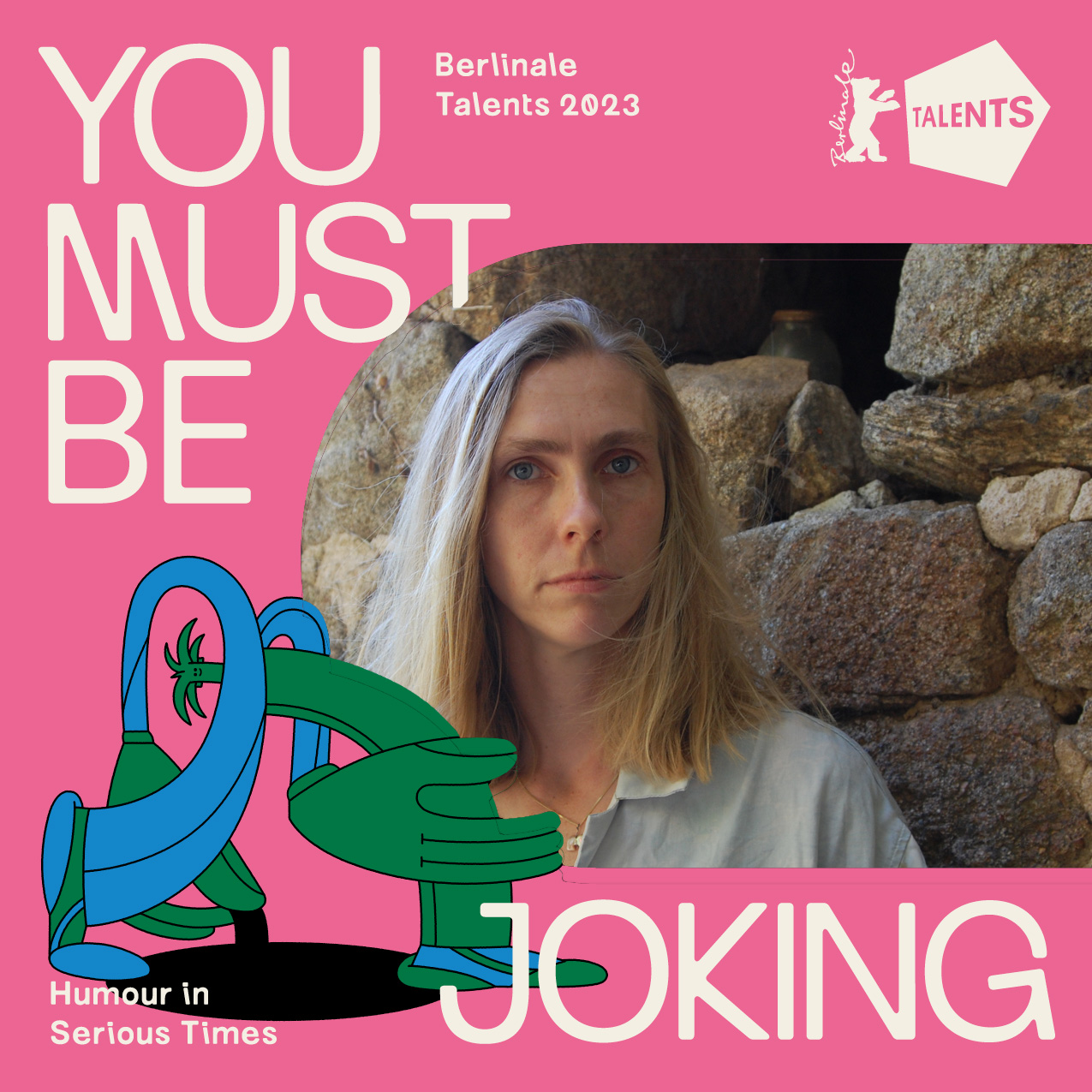
Workshops and Talks

SPAfrica
production @ studio julian hetzel
Diarrhea is my favourite colour
production @ studio julian hetzel
There will be light
production @ studio julian hetzel
Photography
Free work with the Mamiya NC1000s | Leica D-LuxI have been starting taking random photography with the goal to understand more of our craft.
©2025
Contact
Marieke van den Bosch
IMDB